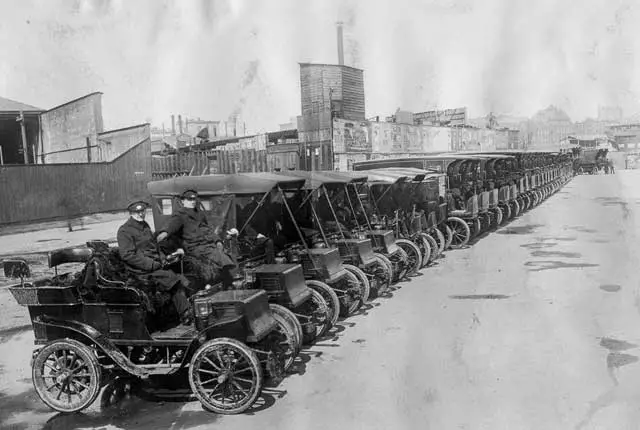 all see this new revolution in the automobile industry as the best innovation brought in this technological revolution of the 21st century without thinking that this isn’t actually an innovation, but something that wasn’t required many years ago when it was first developed. With the appearance of electrical motors, most machinery was automated by such motors, as also the first automobiles. Now, I know that most of you are thinking that the first official launch of an automobile was in 1886 by Carl Benz, but this does not mean that there haven’t been many unofficial launches or prototypes.
all see this new revolution in the automobile industry as the best innovation brought in this technological revolution of the 21st century without thinking that this isn’t actually an innovation, but something that wasn’t required many years ago when it was first developed. With the appearance of electrical motors, most machinery was automated by such motors, as also the first automobiles. Now, I know that most of you are thinking that the first official launch of an automobile was in 1886 by Carl Benz, but this does not mean that there haven’t been many unofficial launches or prototypes.
The decline of our ecosystem has brought us up to this point of needing to look after our Earth, therefore using electric cars is seen as the greenest way to travel. Many people think that this predicament in which we find ourselves as humans is what brought us to the innovation of Tesla cars or other electric car brands. However, this “innovation” was brought to us many years ago, but due to its inefficiency at the time for reasons such as primitive technology and gas being a more powerful solution, it was never implemented into the automobile market.
The first electric car

The first electric automobile and possibly the first automobile was invented by Anyos Istvan Jedlik, a Hungarian inventor and engineer who was very much interested in the power of electricity and it’s potential to make life easier. He was one of the first people to invent a very primitive, yet functioning electric motor in 1827, however, he never had a specific use for it. He just wanted to build a motor that could produce power, however, he soon thought of using the power output from the motor to power a carriage.
Therefore in 1828, he invented a very primitive version of the electric car that only had a stick for steering. The invention was great but never brought much attention to the public as the motor wasn’t producing a significant amount of power for the automobile to catch a record-breaking speed (for that period of time). Most horses were still able to outrun the vehicle and the automobile itself had many flaws. The idea is that the main concept was achieved almost 200 years ago.
The concept was still picked up by many inventors and engineers throughout history. In 1884, Thomas Parker had the same concept, but a slightly different idea. He saw the need for public transport as society was evolving and decided to use a more refined electric motor that could power a big box filled up with seats for passengers. These became the pillars for metro transportation, later on being applied at the start of the 20th century in Great Britain.
Evolution of antique electric cars
Not long after that, a private taxi company was started in 1897 that used only electric cabs in order to give their clients a better ride with less noise as well as without the smell of burned gas. The company was soon wiped out by the competition as gas was much cheaper than electricity at the time.
Another great example would be the Porsche P1 which also functioned only on electricity, the car was invented by Ferdinand Porsche and Ludwig Lohner in 1898. This was an electric vehicle that weighed over 500 kg (1,100 pounds)and was able to travel on a full battery 80 km (50 miles) at a top speed of 34 km/h (21 mph). Quite fast for the time.

What is even more interesting is that Henry Ford actually worked with Thomas Edison to produce a low-cost electric car like the one presented by Porche. During 1913 and 1914 they produced 1,000 electric cars that were similar to the Ford Model T produced in 1908, but with an electric engine. These cars were able to go around 60 km (37 miles) on a full battery, however cold weather made the batteries lose power much quicker, therefore making them obsolete to a gas or steam car.
Since 1920, most automobile companies lost interest in electric cars as the production was too expensive at the time and gas seemed like a more efficient option. As mentioned before, neither the need for electrical cars nor the technology for efficient production was there at the time, therefore it seemed right not to use something that isn’t efficient for the time. However, I wanted to present that these “innovations” aren’t really something new, just older technological concepts that can be produced to be more efficient. Not only efficient but imperative to the future of our planet’s ecosystem.
Avid Writer with invaluable knowledge of Humanity!
Upcoming historian with over 30 million views online.
“You make your own life.”





